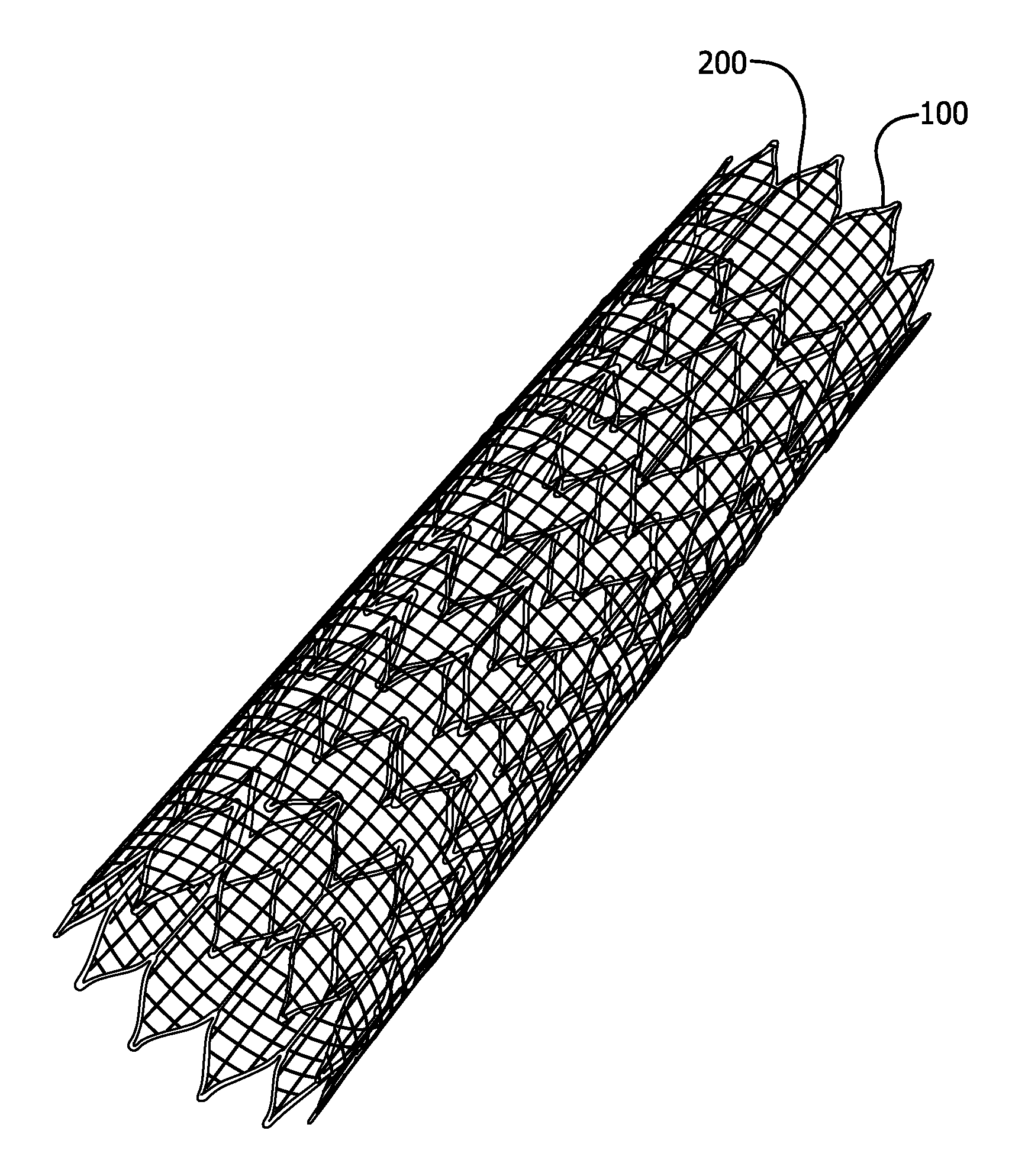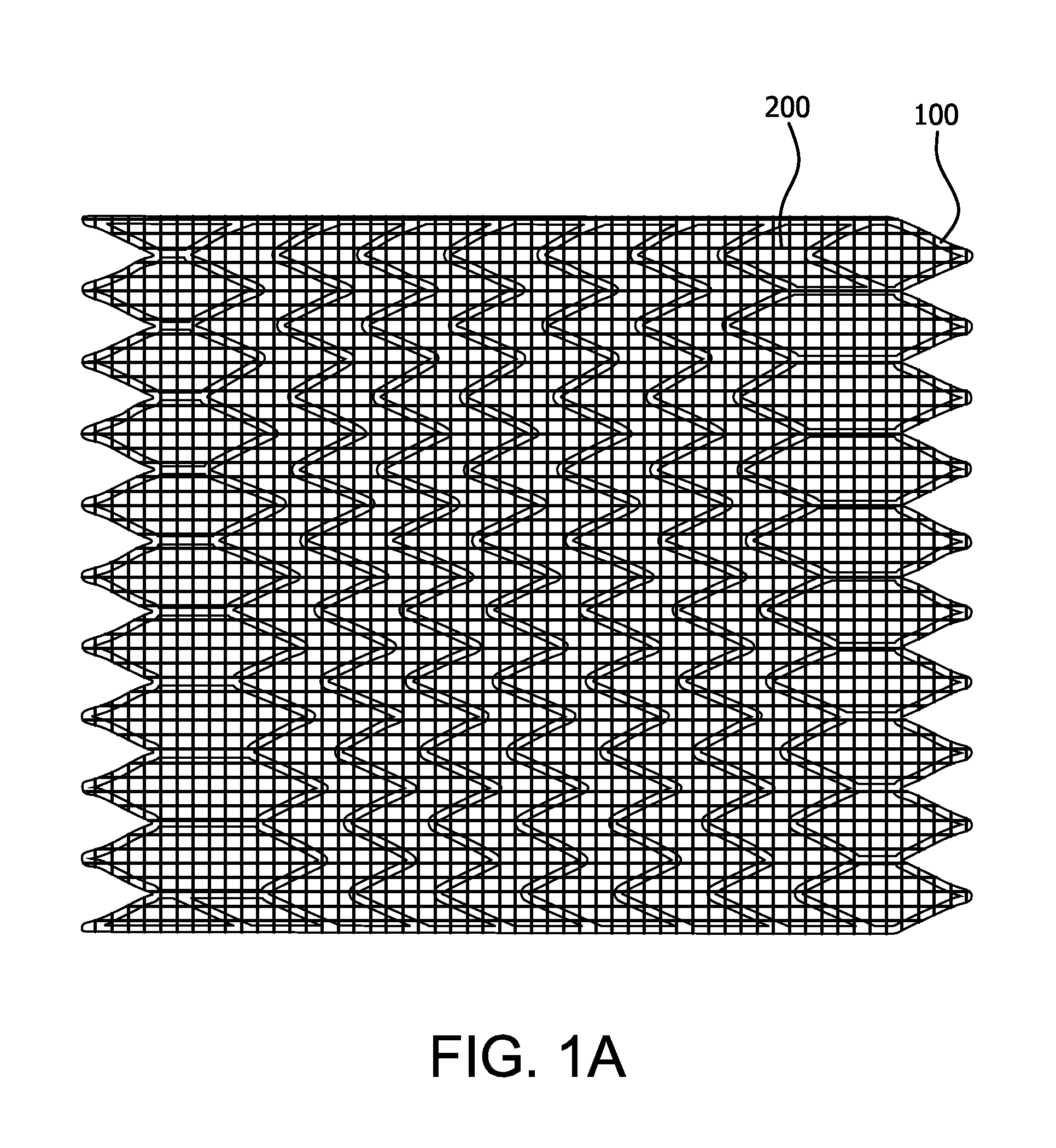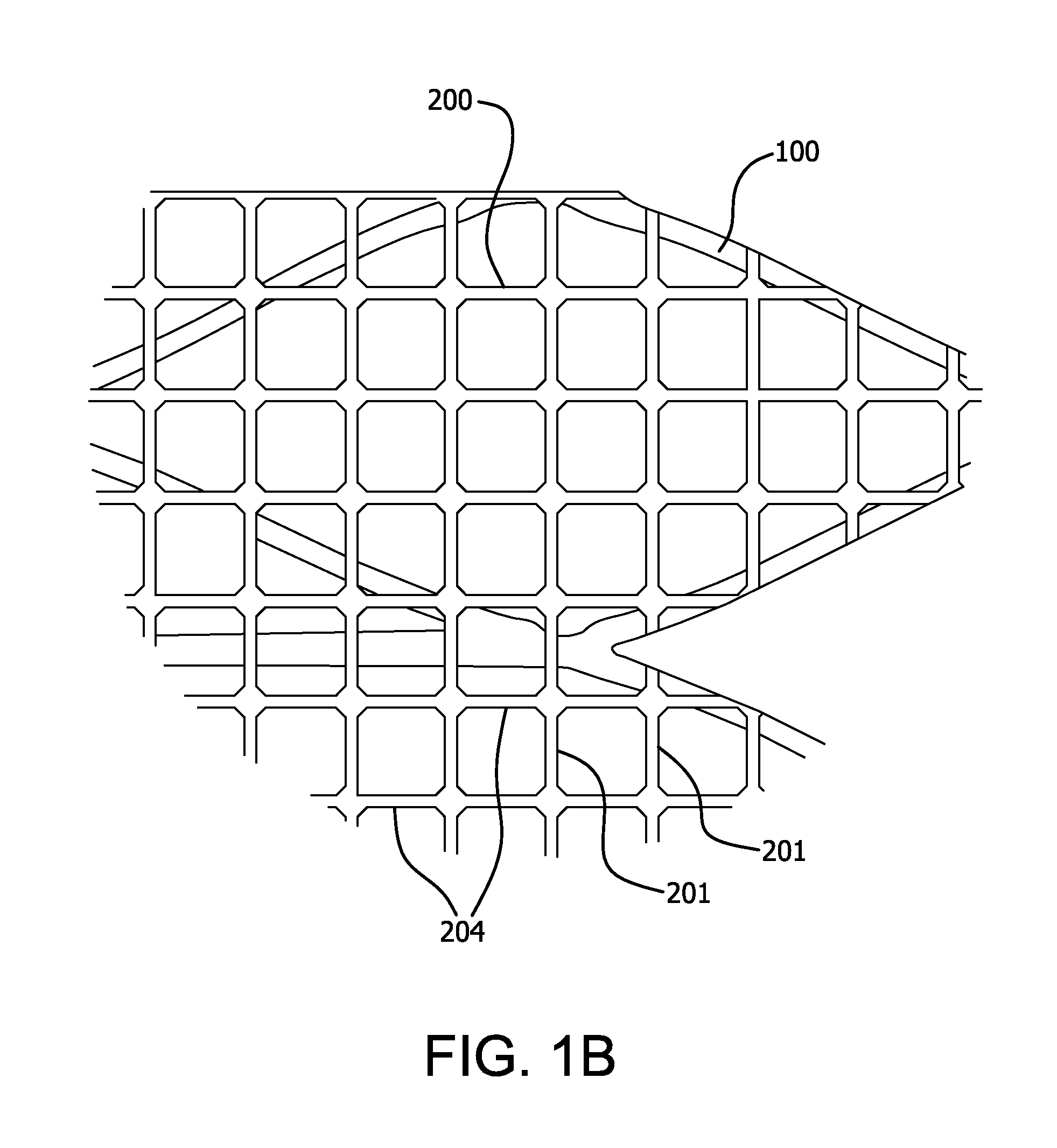Lattice
a technology of ligaments and joints, applied in the field of medical implants, can solve the problems of clinically significant narrowing of the artery, increased size and thickness, or even complete occlusion, and achieve the effect of large differences in mechanical properties and pulsatile complian
- Summary
- Abstract
- Description
- Claims
- Application Information
AI Technical Summary
Benefits of technology
Problems solved by technology
Method used
Image
Examples
example 1
[0138]A lattice of the type shown in FIGS. 1A and 2B with square-shaped openings is prepared. A mandrel is wrapped with an ePTFE film with a discontinuous FEP coating to a thickness of approximately 0.05 mm. The film-mandrel assembly is placed into an oven at 320° C. for 12 minutes to bond the layers. The assembly is removed from the oven and allowed to cool at room temperature to provide an ePTFE tube. Using a CO2 laser, a pattern of regular square openings is cut into the tube. The openings are square-shaped with a size of less than about 0.5 mm. The width of the lattice segments is greater than about 0.05 mm (see FIG. 1B). The prepared square shaped lattice is placed in a convection oven set at 370° C. for 12 minutes. The material shrinks during heating to form squares that are approximately 0.5 mm diameter inscribed circle and lattice segments that are approximately 0.05 mm wide.
example 2
[0139]A lattice of the type shown in FIGS. 1B and 2C with diamond-shaped openings is prepared. An oversized mandrel that is approximately 25% larger than the nominal stent diameter is wrapped with an ePTFE film with a discontinuous FEP coating to a thickness of approximately 0.05 mm.
[0140]The film-mandrel assembly is placed into an oven at 320° C. for 12 minutes to bond the layers. The assembly is removed from the oven and allowed to cool at room temperature to provide an ePTFE tube. Using a CO2 laser, a pattern of slits approximately 40% longer than the final inscribed circle diameter are oriented transverse to the longitudinal axis of the mandrel are cut into the tube. The tube with slits is removed from the mandrel and tensioned over the nominal stent diameter mandrel and the slits open to form diamond shapes. The tube ends are temporarily fixed to length on the mandrel by ePTFE tape. The assembly is then placed into a convection oven set at 370° C. for 12 minutes. The material s...
example 3
[0141]A stent is powder coated with a thin layer of FEP powder (DuPont® FEP Fluoropolymer Resin, Product Type 5101) in a tabletop blender within which the stent is suspended. After the stent is placed within the blender with FEP powder, the blender is activated. The powder disperses into the volume of the blender chamber and the stent is powder coated. After approximately 3 seconds, the stent is removed, and is placed into a convection oven set at 320° C. for 5 minutes. After this time, the stent is removed and allowed to air cool.
[0142]The stent is then placed on a mandrel having an outer diameter approximately equal to the inner diameter of the stent. The mandrel is covered on its outer diameter with polyimide film. To temporarily fix the stent to the mandrel, the stent is placed in a convection oven set at 320° C. for 4 minutes.
[0143]After removal from the oven and cooling of the stent and mandrel assembly, a square-shaped opening lattice according to Example 1 is coaxially posit...
PUM
 Login to View More
Login to View More Abstract
Description
Claims
Application Information
 Login to View More
Login to View More - R&D
- Intellectual Property
- Life Sciences
- Materials
- Tech Scout
- Unparalleled Data Quality
- Higher Quality Content
- 60% Fewer Hallucinations
Browse by: Latest US Patents, China's latest patents, Technical Efficacy Thesaurus, Application Domain, Technology Topic, Popular Technical Reports.
© 2025 PatSnap. All rights reserved.Legal|Privacy policy|Modern Slavery Act Transparency Statement|Sitemap|About US| Contact US: help@patsnap.com



